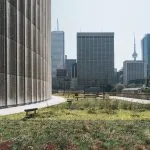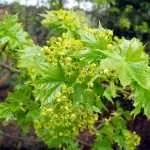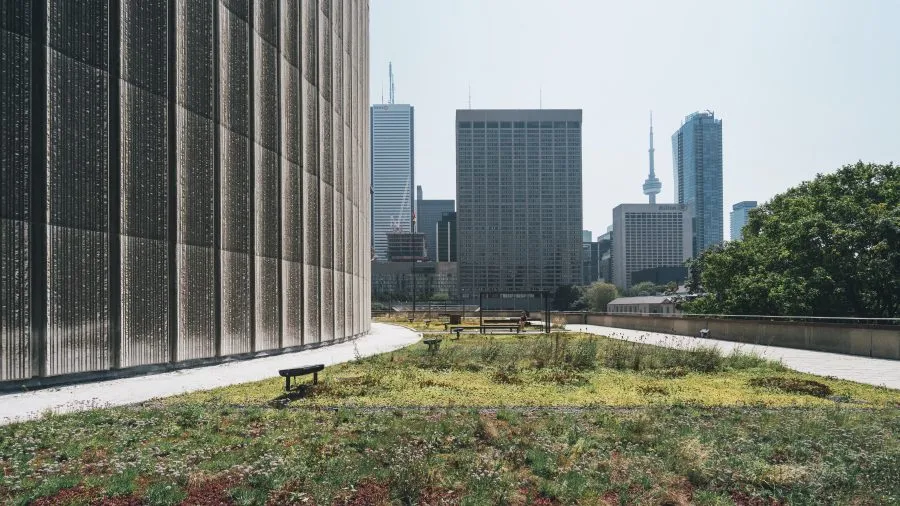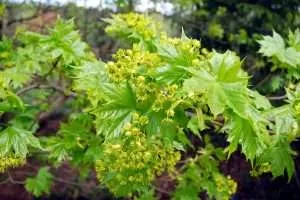Everything You Need to Know About Getting Tree Permits in Toronto
Do you need a permit to remove trees in Toronto? We’ll take you through the information you need to know about Toronto tree permits and bylaws! If you think you might need one, read on to understand the process for getting a permit to remove trees and some of the steps involved.
When Do You Need a Tree Permit in Toronto?
Toronto requires you to have a permit for taking out trees in four situations:
- Regular tree permit application for trees on private property over 30cm / 10inches at 4.5ft from the ground (roughly the size of a wood telephone pole).
- Construction-related tree permits and applications for trees impacted by construction that are over 30cm within a certain range of the construction.
- Taking out or injuring trees in environmentally protected areas like ravines, rivers, shores and coastlines even if they are on your property.
- City-owned trees on your property or overhanging your property.
Regular Tree Permit Process

The second category, tree permits for construction, is the process you have to go through if there are any trees on your construction or renovation project that would be impacted. They may have to be taken out, protected or injured. Construction tree permits are more expensive and complicated to obtain.
Construction Tree Permit Process
For construction tree permits, this might include construction on buildings, driveways, parking pads, pools, decks, retaining walls, and other structures; adding or removing soil in the tree’s vicinity; storing construction materials, vehicles or construction waste; disposing of substances from construction or other activity (i.e. concrete, paint, pool water); exposing tree roots, and some other related scenarios. See the full list on the city website if you’re planning construction.
Ravine Tree Permit Process
Trees in protected areas are also themselves protected and you cannot take them out or injure them without permission. You can find out if your home is in an environmentally protected area for free. In Toronto, the TRCA oversees these areas, in other parts of Ontario there area different regional conversation authorities in charge of protecting natural assets. Ravine tree permits are much harder to get, and require more extensive applications and reports to be approved.
City Tree Permit Process
You also need a permit for taking out or working on a “city tree” of any size. Many front-yard trees are considered city trees, as they grow on the road allowance portion of properties. Typically, the city cares for these trees exclusively, though you can apply for a tree permit to prune or take them out if there is a legitimate purpose.
Calling 311 for Information
If you have a concern about a city tree on your property, you can call 311 to have them investigate the issue. You can also call 311 to request information on who owns the tree in your yard, which can let you know if a permit is required to take it out.
Toronto typically sets a higher bar for taking out street trees, as they are a city-owned asset and produce a community benefit. It can be very difficult to have your application approved if there isn’t a legitimate concern with the tree.
If your property is on a ravine, there may be additional considerations.
What Does It Cost to Get a Tree Permit in Toronto?
The city charges different amounts depending on the type of application and the situation. When you take out a permit sized tree in Toronto, you will need to pay the application fee, as well as sign a contract to replant at least one tree in its place, but this number could be as high as 5 replacement trees in certain circumstances. When there is no space to replant, the city will charge a “payment in lieu” fee of $585 per replacement tree. This fee goes to cover the cost of the city planting trees elsewhere to replace the loss of the tree on your property. Since individual trees are part of the urban forest and canopy, they provide a community benefit and are both an individual and shared resource. For this reason, replanting or payment in lieu of replating is required to help maintain our city forests.
The Cost of Tree Permit Applications in Toronto in 2023:
- Single tree permit application on private property: $132,21
- Shared tree permit application for a boundary/neighbour tree on private property:$275.99
- Construction-related single tree permit application: $395.53
- Construction-related shared tree permit application: $828.04
- City-owned tree permit application: $395.53
Cost of Replacement Trees
When replanting after taking out a tree, the city will require you to pick a tree of a limited number of species. They will specify the location and tree size. The tree size will generally be around 5-8ft tall, and you’ll have to purchase it from a nursery or hire an arborist company to plant the tree for you. It is important to note that the city requires you to submit evidence of planting and you are obligated to keep it alive for two years, or replant it if it dies.
If you are making a payment in lieu for trees, the cost is $583 per tree.
The cost of removing any tree will depend on the size of the tree and the difficulty of the job. You can read more about large tree removal costs here, or if the tree is small enough that it doesn’t require a removal permit, you can learn more about small tree removal costs here.
Number of Replacement Trees
If your application is approved and you can’t do a planting, you’ll pay the $583 fee per tree. The average number of trees for a regular tree permit is 1 – if your application is rejected and appealed to city council, your replacement tree cost is likely to be as high as 5 times that fee.
For construction you’ll be looking at 2-3 replacement trees or more for every tree you take out. Ravine trees and city-owned trees are now being assessed differently, based on a recent pilot program. The financial impact of this is as yet unclear, but it is meant to assess the value of the tree and change the way the fees for these applications are calculated.
Free Tree Permits in Toronto
There are no free permits for trees. You may apply to have an exemption for fees if the tree is dead or imminently hazardous. The city sets a very high bar for these applications. If you are unsuccessful, you’ll have to get a tree permit to take out your tree.
Be forewarned: If you apply for an exemption and receive it, it you will be required to take the tree out within 72 hours and show proof. This can dramatically increase the cost of tree removal as it may be a very hazardous job or have to be done on an emergency basis. It is best to contact companies and get quotes in advance to ensure the best financial outcome.
Do I Need an Arborist to Get a Tree Permit?
No, not for the regular tree permit process, but it is a good idea. While the city website states that it requires an arborist report, we have met many people who have gotten a tree permit application approved on their own. This is especially true for permit exceptions which are granted for trees that are entirely dead, or imminently hazardous. In these situations only, the city will inspect the tree and approve it for removal without a tree permit application fee or requirement to replant. For construction trees, ravine trees or city tree permit applications you absolutely need an arborist to work with you.
When Do I Need an Arborist?
Certified Arborists have specialized knowledge about trees and the rules applying to them in the region where they work. We look at trees differently than other people do — it is hard for many of us to take a walk down a street on our days off and not look at every tree to observe its species, structure, health, form and it’s history. When we walk by trees and see how they have grown and been cut, changed over time or impacted by changes in their environment (like a new driveway, or a bird feeder nailed in) we are getting brief glimpse into the story of the tree.
Tree Permit Applications and Arborist Reports as a Story
The story of a tree is very important to the permit process. The city has a limited number of reasons why it will approve trees being injured or taken out, and they include that it is dying, dangerous, necessary for land development and a few other reasons. If the tree is so unhealthy or dangerous it needs to be cut or taken out, we need to explain why. This might involve giving a brief history of what has happened to the tree, what condition it is in now and whether it can be fixed or saved in a less destructive way than cutting or taking it out.
An arborist reporting on a tree is partly science, partly detective work and partly knowledge of municipal rule and procedures. When we say a tree is unhealthy, it is based on generally accepted scientific principals about trees, how they grow, the pests and diseases that attack them, different species qualities and other factors taught through formal education and ongoing professional development. Explaining how this occurred, how the tree is now and making a professional recommendation to the city for the permit is an essential part of the work we do. As a layperson, individuals are less likely to be able to do this effectively and may be unaware of certain rules or restrictions.
How the City Makes Decisions on Tree Permits
A Certified Arborist with a municipal speciality (like those we have work on tree permits and arborist reports) has a lot more knowledge and insight into both tree science and the rules, regulations and opinions of the city or municipality you’re applying to. The tree permit process isn’t static. The thinking of the city changes over time and is updated based on new information. It is more like the justice and court system than it is like applying for a driver’s license.
Every time a decision is made by the city on whether to grant a tree permit, that creates a precedent and history — meaning that it is a decision on which other decisions will be based. It would be unfair if the city did not generally apply the same rules to everyone, and had different rules for different people. How does this impact your tree permit application?
Valid Reasons for Tree Permit Approvals
You may think you have a very good case to take out a tree or injure it. Perhaps the tree roots keep going into your pipes, or it is close to your house and you’re worried it is going to fall over. Maybe you or a family member is struggling to keep up with the leaves and debris coming down, or your whole backyard is shaded. The city generally won’t approve a healthy tree coming out because of concern for pipes or foundations, and they deny requests related to nuisance problems like leaves.
Some tree permit applications will be rejected outright if the tree is of particular community benefit and other options like tree pruning or cabling and bracing exist. An arborist can tell you this for free during their initial estimate, saving you the permit application fee.
How Can I Get a Regular Tree Permit Myself?
You can go to the city website and read through the requirements for the application. You will need to write a letter explaining your reasons, take pictures and provide evidence backing up your claim. Evidence includes bills for damage, dated pictures of damage caused by the tree, and any other physical proof. While your statement about any tree problems will help, if you don’t supply any evidence of claims related to pipes, foundations, roof damage, etc., your statement alone is not enough. It would be a good idea to educate yourself a bit on tree science in advance.
Lastly, it’s a good idea to contact the City of Toronto Urban Forestry department in your area and ask any questions before applying, so that you make as strong an application as possible.
What Happens If I Get an Arborist to Submit My Application?
If you work with an arborist to take out a tree that needs a permit, they will typically apply for the permit on your behalf and provide the necessary reports to the city. First, the arborist will write an arborist report. This is a required part of the City of Toronto’s application process for tree permits. They will also provide photos, a replanting plan and any other required documentation.
The arborist will then submit the application to the appropriate city office and pay the application fee. Once the city approves the permit, typically between 4-6 weeks, the job can be scheduled.
What Happens If My Application Is Denied?
It is possible to proceed with the application anyway. You’ll have to apply to your city councillor to have the application re-evaluated. If it is a particularly controversial situation, the decision could end up being debated by city council and increasing the number of trees you need to replant or pay for to have the application approved.
What Is a Tree Permit Exemption and How Do I Get One?
In rare circumstances the city will approve exemptions for tree permits. This means that the application fee is waived, and no replacement tree or payment in lieu of planting is required.
Finding an Arborist in Toronto
If you’ve identified a tree you’d like to have removed, the first step is to find a reliable arborist near you. Once you’ve identified someone, they’ll come to your property and examine your tree. You should get quotes from multiple companies.
If you’re not looking for a large company but are more into supporting local businesses, you can find smaller, local arborists across the Toronto. We at Vista Tree Management provide both arborist reports for trees removal, as well as provide tree removal services in Toronto — but we always encourage our clients and potential clients to do as much research as possible into all he companies and options!
If your tree is in a hard-to-access location, like on a hill, in a ravine, or in a small yard with limited and/or narrow access, the removal is likely to cost more. That’s because it’s difficult for arborists to bring equipment close to the tree’s location. Consequently, the removal is likely to take them a longer time. Trees that straddle several properties, especially in backyards, can also be more expensive to remove.
If you’ve hired an arborist for the tree removal, the permit cost is usually built into their quote for the job.
Wood and Stump Removal
If you’re working with an arborist, they will typically remove the wood. If you want to keep some or all of the wood, they can leave it for you. (In the case of diseased or infested trees, an arborist may warn against this!)
Stump removal is normally a different process and not included in the price of tree removal. You’ll have to have your arborist schedule this service separately. Learn more about stump removals in our stump removal guide.
If you’re having a street tree removed by the city, they normally book stump removal for a later date, though this can be several seasons later depending on how busy they are and what time of year your removal was done.
Need assistance from an arborist in Toronto for a tree removal? Contact Vista Tree for your consultation!








